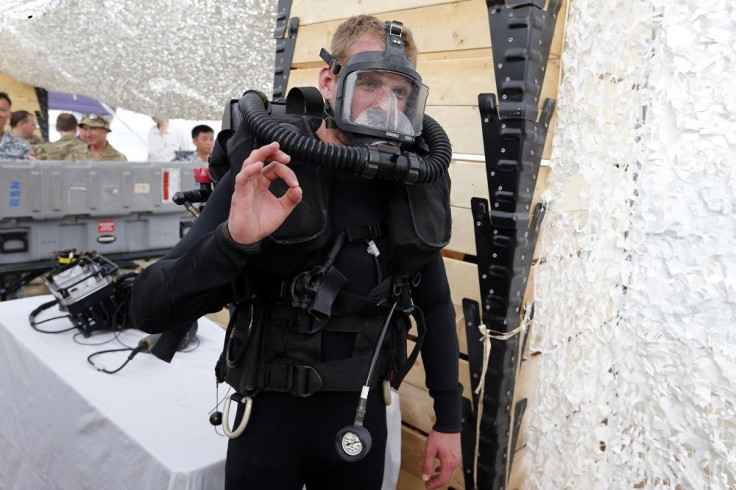Thermal Technology Makes Its Way To Women's Diving Suits

Most diving gear sold in the market these days are made for men. And while this fact does not deter women from diving in shallow and warm waters, it might be a different story when ice cold waters are involved.
"It doesn't really matter where you are; you just have to be warm," said diving professional Faith Ortins. "Depending on what the water temperature is, you change what you wear underneath it, but I almost always wear what is called a dry suit."
As its name already suggests, dry suits are designed to prevent water entering, thereby protecting the whole body from cold temperatures. It provides thermal insulation to the wearer when immersed in water. Unfortunately, the choices for women's dry suits are very limited.
"There's a lot of differences [between men's and women's bodies] and we can't just start with a men's pattern and scale it down and make it pink, which is what pretty much what everyone was doing. We have hips and smaller shoulders, smaller arms, and obviously a different ratio in height and weight," Ortins said, expressing her frustration at the lack of dry suits for women.
This is the reason why Ortins partnered up with Vallorie Hodges, a diving officer from the Institute for Marine and Antarctic Studies, in designing BlueHeat, a line of battery-powered undergarments and dry suits that help heat up bodies while remaining submerged under cold water. Available for both men and women, the apparel takes into account the differences between the bodies of men and women to ensure a comfortable fit.
Thermal technology is not a new thing among underwear brands. In fact, many undergarment companies are offering products that are able to regulate temperature to provide utmost comfort. An example of this is Naked Brand Group Inc. and its new Silver Collection, which makes use of X-Static fabric to keep the user cool and chafe-free. It is especially useful for men who engage in rigorous sports and activities, as Naked Brand's underwear could help regulate temperature and make sure that they are always comfortable down there.
However, the BlueHeat line of diving apparel is an innovative use of thermal technology, as it not only helps users stay warm underwater but also allows them to remain underwater for longer periods of time, either for recreational or research purposes.
"In Alaska, we were getting 20-minute dives, and then we rapidly realized that we needed to go to not only [get] just a dry suit, but dry hood, dry gloves, that sort of thing," Hodges said. But BlueHeat solved that problem. "We doubled our dive time. We went from 20-minute dives to 40-minute dives wearing a dry suit. With heated undergarments, you can double that again pretty easily," she said.
Both women have used the dry suit and electric underwear to dive in remote areas like Tasmania, Galapagos Islands, Scotland's Scapa Flow, California Channel Islands, Iceland, Alaska, and even the icy waters of Antarctica, where water temperature hovers around 28 to 29 degrees Fahrenheit.
To contact the writer, email: v.hernandez@ibtimes.com.au






